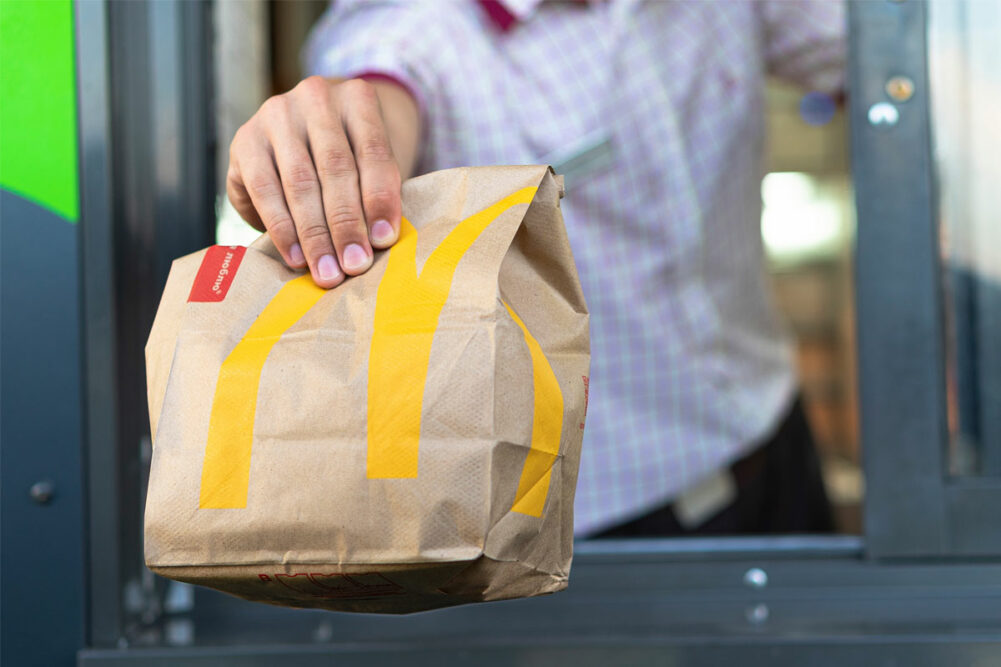CHICAGO – While lower income consumers may be trading down and moving away from McDonald’s Corp., the quick-service chain is benefiting from other consumers trading down from full service and fast casual formats. Hearkening back to the Great Recession of 2008/2009, company management expects to be an overall beneficiary of consumer adjustments to inflation.
“Our planning expectation is that while there is going to be some shifting within the cohorts … net-net, our value positioning, our value scores, we expect to be a winner out of all of that,” said Christopher J. Kempczinski, president and chief executive officer, during a July 26 conference call to discuss second-quarter results.
Consumer traffic in the United States was flat during the second quarter, but McDonald’s benefited from higher average checks with US comparable sales rising 3.7% compared to the previous year.
“That average check was driven mainly by price increases,” said Kevin M. Ozan, chief financial officer. “Year-over-year in the second quarter, our menu prices were up high single digits … And we expect for the year to be in that high single-digit range for the full year.”
McDonald’s net income for the quarter ended June 30 was $1.2 billion, equal to $1.60 per share on the common stock, and down when compared with the second quarter of the previous year when the company earned $2.2 billion, or $2.95 per share.
Quarterly sales fell 3% to $5.7 billion.
Global comparable sales rose 9.7% during the quarter, reflecting growth across all of the company’s business segments.
“With global comp sales up nearly 10% and most of our major markets continuing to grow market share, one thing is clear: The world continues to move in fast and often unforeseen ways,” Mr. Kempczinski said. “As it does, the McDonald's brand endures.”
He added that over the past six months the “macro uncertainty” McDonald’s faces have increased.
“We now face war in Europe, inflation is running at its highest levels in 40 years, interest rates are rising to levels we haven't seen in years,” Mr. Kempczinski said. “All of this is contributing to weak consumer sentiment around the world and the possibility of a global recession. We're mindful of these risks, and we're planning for a wider range of scenarios.”
Mr. Ozan said that for the full year McDonald’s expects to experience inflation in the 12% to 14% range.
“It’s a little higher than that in the second quarter, likely a little higher than that in the third quarter,” he said. “And then we expect to see it to moderate some in the fourth quarter. Obviously, that’s based on what we know today. That’s on food and paper. On the labor side, we’re probably seeing a little over 10% labor inflation right now.”
McDonald’s will continue to emphasize value on its menu, but Mr. Kempczinski emphasized it will be in a more targeted approach.
“In the past, go back maybe 10 years ago, we didn’t have the ability to deliver that sort of precision value, and you would end up having kind of a national deal that would hit everybody,” he said. “But we know that … there’s a lot of waste in that, that there are people that you’re delivering value to under that scenario who probably would have still bought without it.
“So, what we're looking at doing and with the US team, along with our pricing advisers, is (identify) exactly which products on the menu do you need to offer value, to what degree and then through what vehicle.”
Net income for the first six months of the fiscal year was $2.3 billion, or $3.08 per share, and down 39% from the year prior.
Sales for the period were $11.4 billion, up 3% compared with the previous year.





